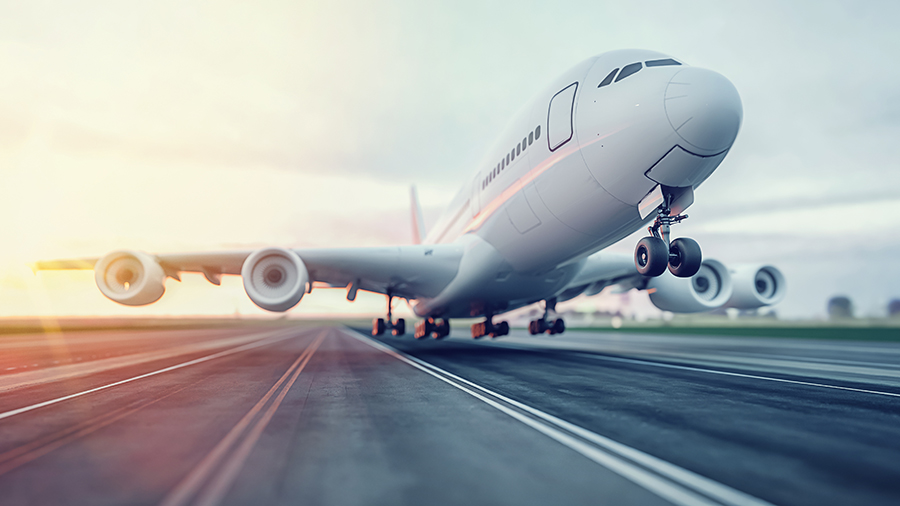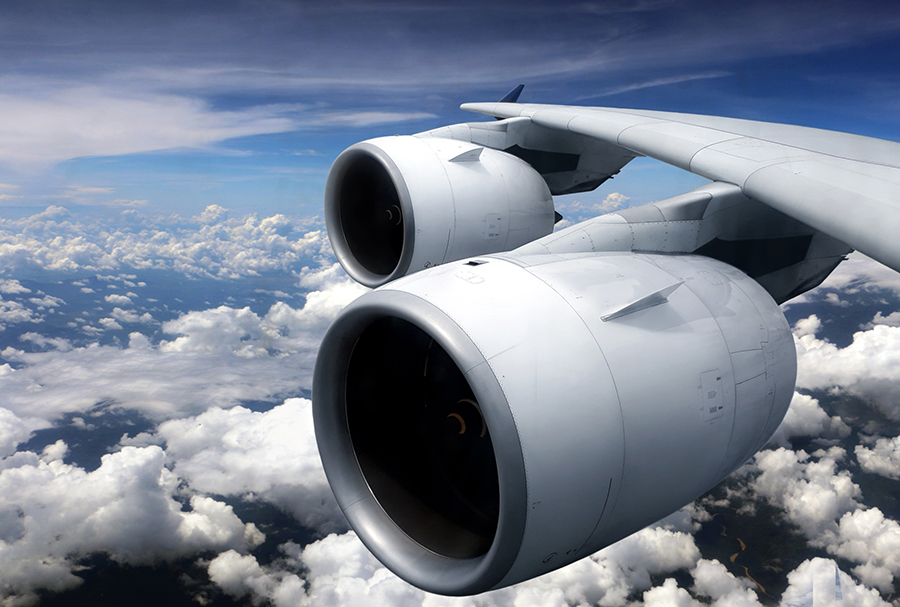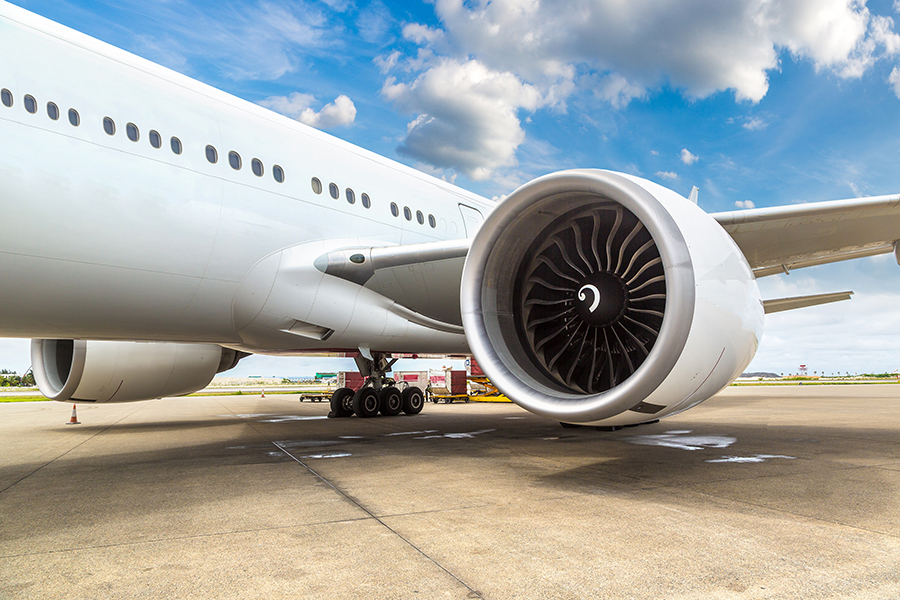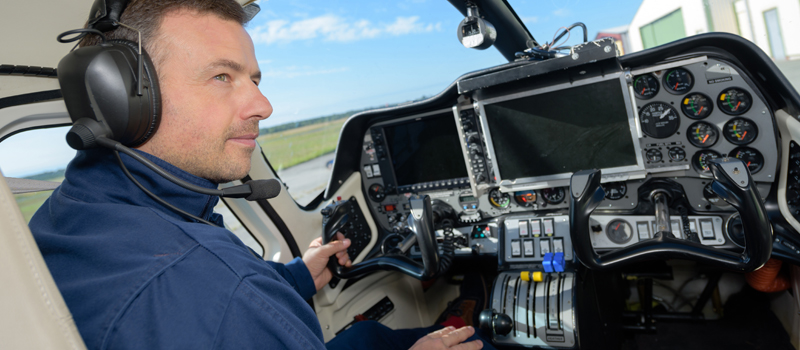Would you be surprised to learn that most two-engine jet airliners actually have three engines? Yes, it’s true! You may occasionally hear pilots making reference to the ‘APU’. What is it? You are about to find out as we explain where you can find this engine, what it does, and why it is so important.
What is an APU Engine?
APU stands for ‘auxiliary power unit’. It is a small engine, often mounted in the tail, providing electrical power and compressed air on the ground and occasionally in flight. Unlike regular jet engines, it isn’t used to provide thrust. Hence, it is deemed ‘auxiliary’.
While an engine that doesn’t produce thrust might seem a touch counter-intuitive, the APU provides several highly valuable functions.
In fact…
Without an APU, it would be a real struggle for most commercial airliners to quickly and easily get off the ground.
Read on to find out how it works and what it does.
How Does an APU Work?
An APU is normally a gas turbine engine (although piston-driven versions are entering the market too). It works in precisely the same way as a conventional jet engine.
Principally…
It draws in air, compresses it, mixes it with fuel, and ignites it to produce a hot compressed exhaust gas.
The cycle looks like this: –
- Air is drawn in via a turbine (a fancy aviation term for a large fan)
- The air is brought to rest against fixed stator vanes, where it is compressed
- Fuel vapor is added to the compressed air
- The air is ignited, where it increases in temperature and expands rapidly, creating lots of energy.
A conventional jet engine will eject this hot gas out of a nozzle in order to create thrust.
An APU doesn’t do this.
Instead, the hot exhaust gas is directed to another turbine at the rear of the APU. This is connected to the front turbine, causing the front or first stage turbine to spin faster. This, in turn, draws in more air, continuing the cycle.
If you’ve ever been walking near a passenger jet, you can often hear a distinctive ‘whine’, even though the main engines appear to be stopped.
There’s a good chance that what you are actually hearing is the APU. It is a tiny jet engine that creates a really high-pitched whistling sound.
Wait!
We go to all this effort to create zero thrusts?
Correct. The APU isn’t used to provide any forward propulsion to the aircraft. Instead, aircraft use the APU’s high-powered efficiency for other things.
Such as?
Well…
What is the APU Used for in Aviation?

The APU normally has three main functions in commercial passenger jets. It is used primarily to start the engines, provide air conditioning to the cabin, and generate electrical power. It actually performs quite a few vital roles for such a small engine.
Here’s what you need to know.
The APU outputs: –
Bleed Air
Used for: –
- Engine Starting
- Air Conditioning
While some of the air pushed through an APU does make its way out the back exhaust. It isn’t wasted.
The truth is that jet engines (even tiny ones like the APU) can compress air to really high pressures. Before it is ejected or used elsewhere, this compressed air is drawn off.
In aviation, there is a specific term for engine air that is ‘bled’ out of the compressor.
Unsurprisingly it is referred to as ‘bleed air. (A touch unimaginative, we know).
The pressure of this air is normally regulated by a moveable valve known as a ‘bleed valve’. As a result, the bleed air pressure can be fine-tuned to be the perfect pressure for its end users.
And they are?
The engines!
Jet engines need a constant high-pressure air supply to their latter stages to keep turning and working. When flying through the air, they are self-sustaining. The hot exhaust gas and high airflow are enough.
However, when the airplane is cold at the start of the day, it has neither of these things.
Here’s where the APU comes in!
Hot, high-pressure air is bled off from the APU’s compressor and fed to an intermediate stage within the main engines. This gets the main engine turning. This bleed air is also combined with fuel before being ignited in the core of a jet engine.
Once the engines are running, the APU bleed air is isolated from the main engines. Leaving them to run independently.
And there’s more…
The APU is also used to provide air conditioning air.
Obviously, we don’t want hot, high-pressure engine air making its way into the cabin. So the air is passed through a series of turbines and heat exchangers. More commonly known as air conditioning ‘packs’.
The turbines in the packs make the compressed APU air do ‘work’. This work causes the air to cool rapidly. It is then fed to a duct (a technical aviation term for ‘large pipe’), where it is mixed with ambient cabin air before being circulated through the cabin.
However, it doesn’t end there. The APU also has another use…
Electricity
Used to: –
- Power aircraft instruments
- Provide aircraft interior lighting
- Power the Radios and navigation equipment
- Ensure power supply to the aircraft flight control computers
- Supply energy to the Engine Control Units (also called FADEC)
Modern-day aircraft may be driven by fossil fuels, but they are powered electronically. Inside most modern-day jet airliners, you’ll find banks of computers and circuit boards used to power a whole manner of onboard equipment. These clever computers rely on one thing provided by the APU.
Electricity.
The APU’s main driveshaft spins extremely quickly (it is a jet engine, after all).
Through a series of complex gearboxes and accessory drives, this movement can be used to turn a generator, providing electrical power to the whole aircraft!
Normally, when you board an airliner, the APU will provide you with cool fresh air to breathe and the light with which the cabin attendants check your boarding card.
Neat, right?
The main engines normally provide these functions when the aircraft is airborne.
This leads us to the final way in which the APU is utilized…
Backup and Engine Redundancy
Engine failures are a really rare occurrence in aviation. However, they do happen occasionally.
The good news is that designers and manufacturers have built a high degree of redundancy into the aircraft in modern aviation.
What does “redundancy” mean?
Quite simply, most systems on the aircraft will have a reliable backup. When it comes to vital services, airplane manufacturers take no chances. This is particularly true when discussing breathable air and electrical power.
The APU can supply both bleed air to the cabin and electrical power in the event of an onboard failure. In fact, it is so powerful that the APU generator can easily match the output of the main engine generators!
How Much Fuel Does the APU Use?
Now.
You might think that the APU uses a lot of fuel with all this important work.
This isn’t the case.
Whereas a regular jet engine may burn over 2000 – 4000 lbs of fuel each hour, an APU uses a fraction of that amount. On a typical airliner (like the Airbus A320), it will use a mere 440lbs per hour!
It’s actually a really efficient system!
Does the APU Run During Flight?

As a general rule, the APU is not regularly used during flight. Remember, the APU provides bleed air and electrical power. It doesn’t provide thrust. In flight, the main engines provide thrust and these other services.
The bottom line?
There is little point in burning extra fuel to run an APU when you have two (or more) engines already providing those services.
Also.
The main engines have huge forward-facing fans, allowing them to make the most of the high-pressure ram air caused by the airplane’s forward movement. Conversely, the APU has a tiny inlet flap that allows air to get to its first stage turbine. As a result, the altitudes at which the APU can be successfully started and run can be limited.
However, as with most aviation-related things, there are exceptions to the rules.
If an airplane is heavy or operating in hot-and-high environments, the main engines will need all the help they can get. Tapping even a little bleed air from them can harm takeoff performance.
The APU can come to the rescue! Pilots will often use it to provide electrical power and air conditioning air during takeoff, allowing the main engine’s power (and air) to be entirely devoted to producing climb thrust!
What Happens If the APU Fails in Flight?
Generally speaking, the APU failing in flight is not too big of an issue. Remember, it is an auxiliary power unit, meaning it is surplus to requirements. The main engines normally provide electrical power and air conditioning air, with the APU acting as a backup.
You can think of it a little like getting a puncture in your spare tire while it is still in the trunk. Sure, you lose the option of using it later on, but it isn’t a problem as long as the main wheels stay good. The same principle applies to the main engines in flight and the APU.
What Happens if the APU Fails on the Ground?

The APU failing on the ground is a whole different story. It can cause a flight to be grounded completely. The APU is used for engine starting and creating electrical power before the main engines are running. It can make acquiring both of these goals much more challenging if it is broken.
But…
APUs do break down on the ground, and there is an answer.
Remember the things that the APU provides? Both compressed air and electrical power can be supplied to the aircraft from external sources. However, ground air carts and ground power units (GPUs) are often in high demand at major airports.
So, if the APU has failed, this can involve a lengthy wait on the tarmac until the ground services become available.
Final Thoughts
Aside from providing compressed air and electrical power, really the APU provides aircraft operators with something else. Flexibility. The APU allows aircraft to start and power themselves independently of ground services by being a self-contained onboard unit. It also acts as a useful backup to some services provided by the main engine.
If talking tech about airplane components is your thing, why not check some of our other blog articles? Or, if you find it interesting, why not enroll in some aviation ground school and work your way through to flying an airplane for real?




